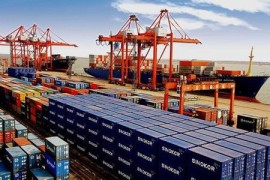
In recent years, China’s relatively low value-added steel varieties of main areas is still the southeast Asian countries. Southeast Asia level of metallurgical steel and metallurgical steel costs compared to the domestic steel industry, but this kind of national infrastructure also high demand for steel, this led to the corresponding domestic steel varieties to enter the market opportunity.
Data show that the Philippines billet production only meet the domestic demand of about 35% – 40%, 75% of total imports of steel billet from China, is likely. It is reported that the Philippines bar and Angle steel manufacturers are also has been cancelled most-favoured-nation import duties to lobby for the product. If cancel the MFN tariffs, will lead to the main steel rate balance between importing countries and regions, in other words, countries and regions billet resources in the Philippines market will stand on the same starting line, the differential of the influence of the local market sales price will disappear and so will affect the Philippines mainly grey importer in the advantage position in the local market in China, gradually reduce the billet market share in the Philippines.
Billet rolling enterprises on the one hand, the Philippine side to seek more profit potential raw billet, in an effort to lobby; On the other hand, in the finished steel market, steel products in China in the face of more frequent “anti-dumping”, it seems to form a contradictory situation.
Behind the rapid development of China’s steel output is large iron ore imports, at the same time, the steel industry belongs to the typical “high-polluting, high-energy-consuming and resource-dependent” industry, a large number of exports has been also not to be encouraged. Can be said to be the lowest value in steel billet products varieties, a large number of imported iron ore after almost or semi-finished products began to export, production of smelting is undoubtedly take pollution for our country, benefit importer financed.
Outer, importer for the balance between countries trade resources, seek domestic interests maximization; , countries that do not encourage even limit the outflow of semi-finished products of iron and steel industry and prevent damage to domestic resources waste.
Encourage the production of high value-added export income in our country, this is the reason for the well-known “export tax refund”, as well as to keep pace with The Times to limit the low value-added industrial exports of semi-finished products in particular. As early as in 2005, general carbon billet exit drawback have been cancelled. In recent years, boron steel exports once hot, in the third quarter of 2014 b steel exports account for even 53.03% of the total exports, many small and medium-sized steel mills in ordinary steel adding 0.0008% trace boron element according to alloy steel export tax refund after operation, the loopholes big help, so that the boron steel tax rebate policy has been cancelled by the end of 2014.
Since this year, boron steel in export markets almost disappeared, but the handsome profit at the same time control in seeking to export steel factory cost, market and gradually appeared in chromium steel exports. In the future, our country low value-added products and industrial intermediate exports path must be under siege, under the premise of global excess steel production capacity, from low-end to high-end steel products will be more competitive, and the domestic steel industry structure adjustment will also include export steel structure, contains trace alloy, carbon steel, will gradually fade out the mainstream foreign trade market.








